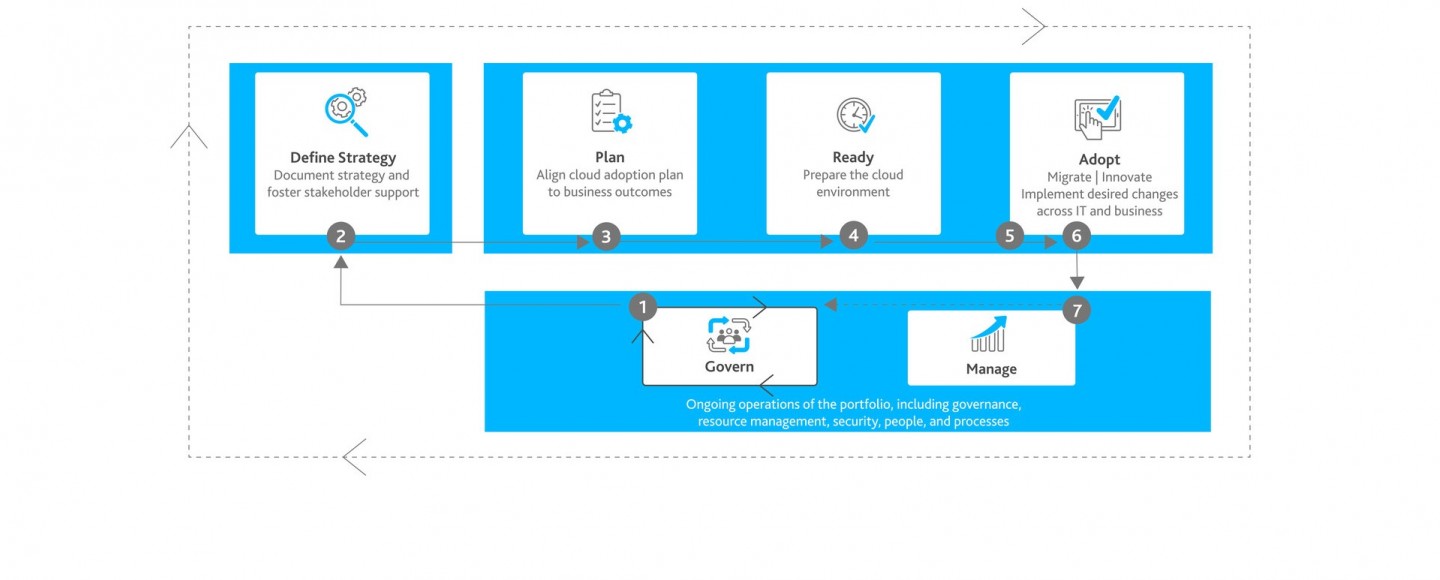
The pre-structured path to the cloud
A cloud migration is a complex project with numerous pitfalls and dependencies. In order to be able to carry out the transformation on a structured basis, Microsoft has created a best practice guide with the Cloud Adoption Framework. Does this also work for medium-sized companies?
It is a truism that every cloud migration project is different. At the same time, however, cloud migrations are almost always strategic projects that have an impact on several business processes. They are driven by overarching issues, such as reducing infrastructure costs while increasing flexibility and performance, digitalization and automation of processes, adaptation of new technologies and, last but not least, IT security. This poses immense challenges for medium-sized companies in particular, as they seldom have the time or the resources to manage a data center transformation alongside their operational business.
Frameworks should help to reduce this complexity and to proceed in a structured manner. In this way, typical mistakes in the planning and selection, implementation and alignment as well as operation of cloud resources can be avoided. Microsoft's Cloud Adoption Framework is a collection of documents, implementation guides, best practices and tools that can support cloud migration. The framework covers the entire adoption cycle: from defining the cloud strategy to operations.

The Cloud Adoption Phase Model at a Glance
The Cloud Adoption Framework defines six phases, to each of which requirements and possible measures are assigned: Strategy, Planning, Deployment, Adaptation, Organization and Management. This approach is flanked by a continuously expanding governance and security concept. From the very beginning, the focus is on the actual business goal - the IT infrastructure is understood as a flexible means to achieve these goals. In order to achieve cost transparency and comparability with previous IT operations, numerous measurement and test points are built into the process.
Phase Model of the Cloud Adoption Framework for Azure

It is a universally applicable framework for companies of all sizes. Not all sub-disciplines, possibilities, tools and roles covered by the framework are relevant for SMEs - this has been shown in numerous cloud migration projects that we have accompanied. Nevertheless, the framework can provide a framework with recommendations for action from which you can draw - depending on your specific requirements. In practice, it has proven useful to bring all planning and concepts in line with your own business principles:
- What is my company's specific strategy and is the cloud project economically viable?
- What does the transformation mean for my organization, what impact will the cloud have on the entire infrastructure, and can I manage the operation?
- And finally: What offers are available on the market and how will the migration take place?

Our partners
All partners






